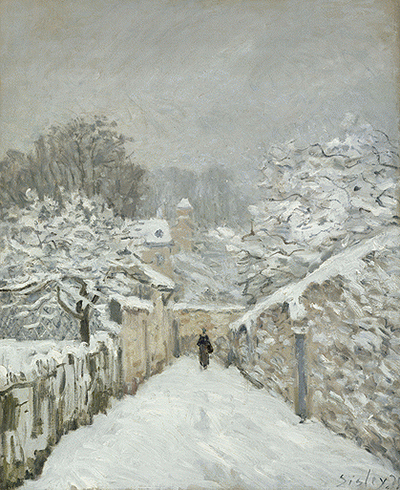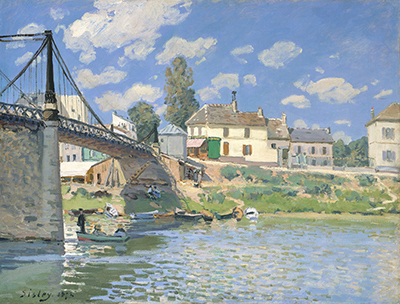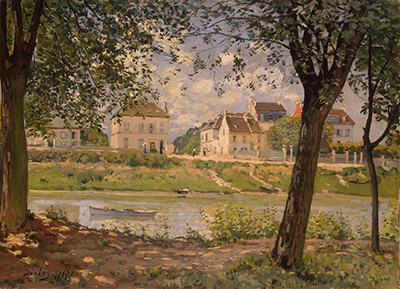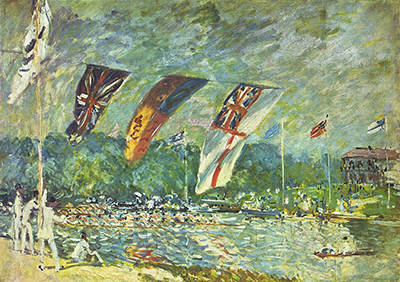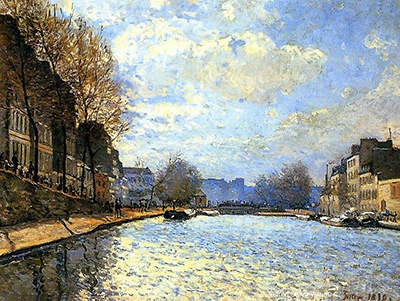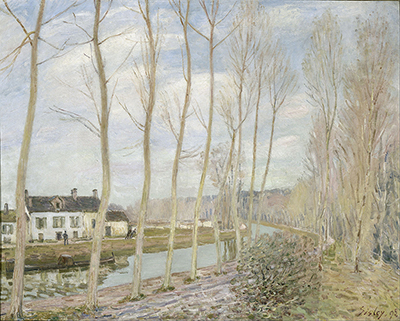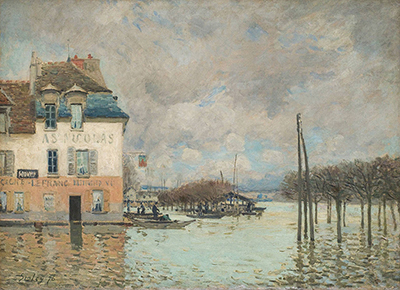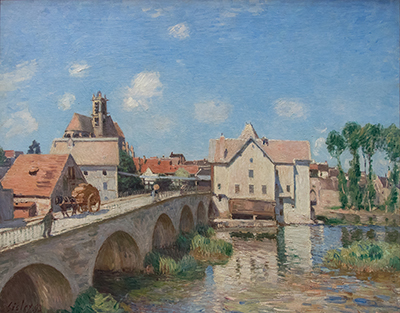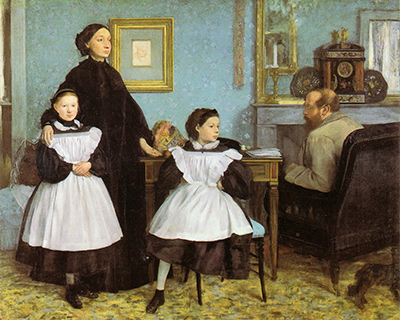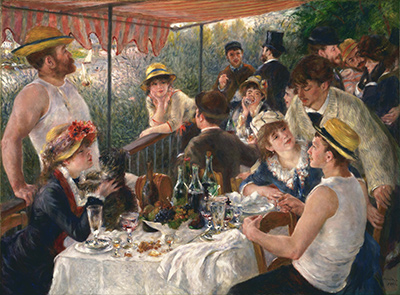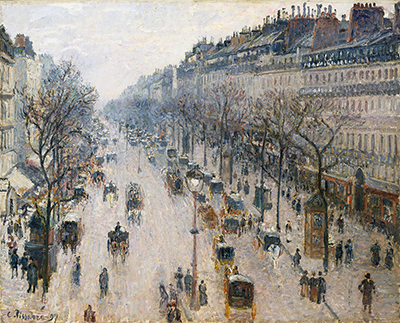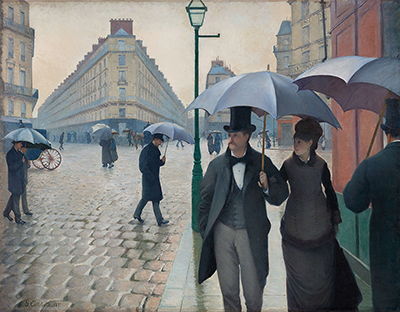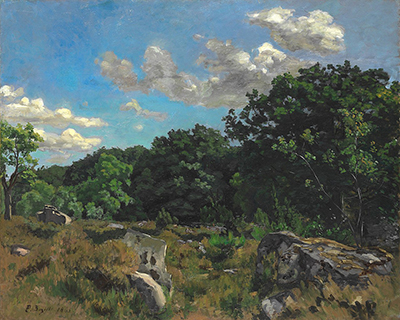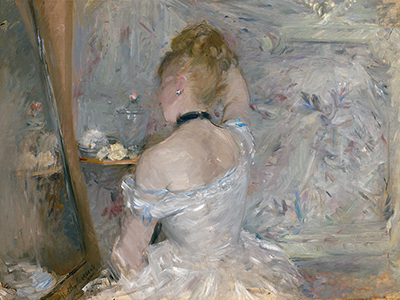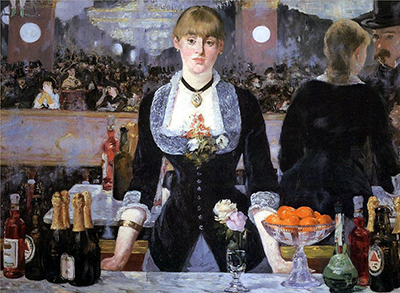Snow at Louveciennes by Alfred Sisley is an oil painting created in 1874. It captures a picturesque scene of a tranquil early morning winter in Louveciennes, a small village is located in the western suburbs of Paris.
The artist paints the sky in white, crisp blue, and grey hues. In addition to his use of perspective in showing a winding road disappearing into the background, Sisley also combines various brushstrokes to depict depth and texture. The buildings in the paintings are covered with snow. The painting also shows an isolated woman with an umbrella in hand walking along the pathway, with calm trees on the side. The painting invites the viewer to take a walk with the woman as she enters the village. However, there is no clue as to where she is from, or where she is going.
With most of Alfred Sisley's pieces being typical of Impressionism, this piece is no different. It is even considered as one of his truly masterful works through his poetic rendering of snow. Sisley was born to English parents in France. He began painting at an early age and was heavily influenced by the works of Camille Corot. Sisley spent four years in England between 1857 to 1861, where he was able to admire the works of English artists such as Constable, Turner, and Bonington. These influences can be seen in his use of colors to form subtle harmonies and refined landscapes in his paintings. Sisley would later become closely associated with other founders of the Impressionism movements such as Pierre-Auguste Renoir and Claude Monet. Sisley's works are mostly distinguishable through his use of soft harmonious values.
Sisley was particularly interested in the countryside during the sad and desolate winter season. He especially found inspiration in the silence and mystery of the winter landscapes. He was especially drawn to snow scenes since he could study the variations in light by using a different range of shades. In addition to this painting, he also painted other scenes in places such as Veneux-Nadon and Maryl-le-Roi. The Franco-Prussian War ruined Sisley's family, which resulted in the artist facing constant struggles against poverty. It was not until his death that his art would become widely recognized and appreciated.
More Impressionist Artists



